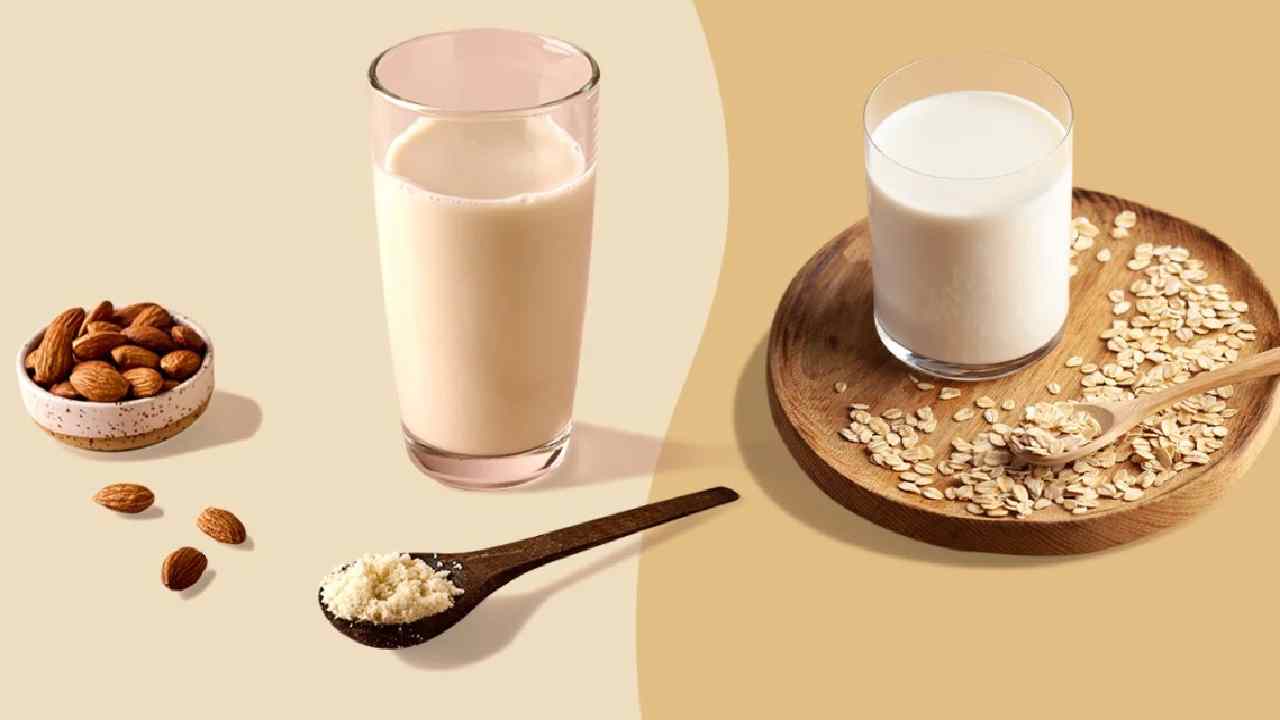

Almond Milk vs Oat Milk:
As more people shift away from dairy, plant-based milk alternatives like almond milk and oat milk have become popular. Though both are dairy-free, they differ in nutrition, taste, and environmental impact. Here’s a simple look at how they compare and which one might be the best fit for you.
A single cup (240 ml) of unsweetened almond milk has about 59 calories, 1 gram of protein, 8 grams of carbs, and 2 grams of fat. On the other hand, oat milk contains around 79 calories, 4 grams of protein, 14 grams of carbs, and 1.5 grams of fat.
So, almond milk is lower in calories and carbohydrates, while oat milk offers more protein and fiber, especially beta-glucan, which supports heart health.
Both types of milk are often fortified with calcium, vitamin D, and B12 to make them closer to dairy milk in nutrition. Almond milk naturally has more vitamin E, while oat milk provides some iron and soluble fiber for digestive benefits. However, many packaged versions may contain added sugars or flavorings, so always check the label for unsweetened, fortified options.
For weight management: Almond milk is better since it’s lighter and lower in carbs.
For heart health: Oat milk’s fiber can help lower cholesterol.
For allergies: Almond milk isn’t suitable for those with nut allergies, while oat milk may contain traces of gluten.
For protein intake: Both are low, so add other protein-rich foods to your diet.
Oat milk is generally more eco-friendly, needing less water and land to produce. Almond farming, however, requires a large amount of water and heavy pollination.
There’s no single winner—it depends on your goals.
Choose almond milk for fewer calories and carbs.
Pick oat milk for a creamier texture and heart-friendly fiber.
Both can be healthy additions when chosen unsweetened and fortified, fitting easily into a balanced diet.
ALSO READ: Baahubali The Epic Day 1 Collections: Here’s How Much Prabhas’ Film Earned